Keeping your dog toasty in winter
The temperatures are dropping, the wind is blowing cold, snow is falling and our warm winter coats and boots are in constant use. We have quite a lot of options to protect ourselves against the cold, but what about our dogs?
Do dogs even get cold?
Cold and humid weather, along with snow, ice, and road salt on the streets are the challenges that you’ll face when out for a walk in the winter months. To make sure that your dog can actually enjoy the time outside, there are some things you should keep in mind.
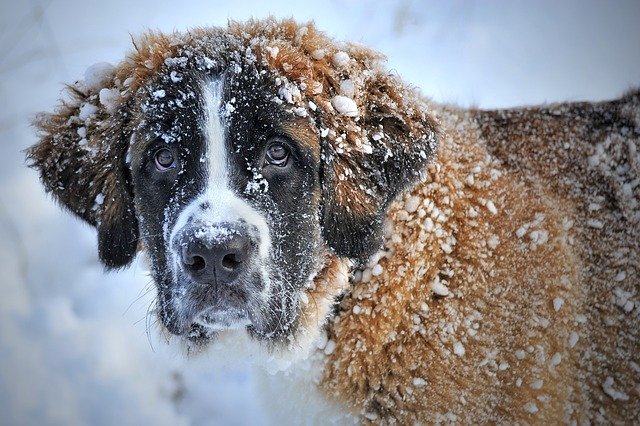
When looking at a fluffy dog that seems to be more fur than actual dog, it’s easy to believe that dogs simply can’t get cold, even in winter. While that might be true for some breeds, especially those that were bred to live in colder climates, there are dogs that are not adequately equipped to deal with low temperatures.
Generally speaking, dogs with long hair and/or a double coat handle the cold well. There is, after all, a reason why a Samoyed will roll around in the snow for hours. Dogs with short hair and those without a dense undercoat, which provides insulation, are the ones that freeze more easily.
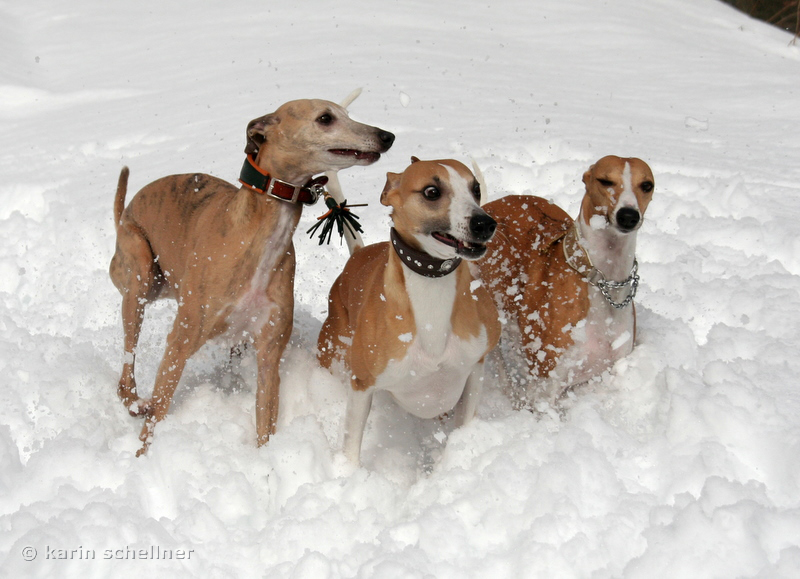
If your dog’s belly is only sparsely covered in hair, it also will get cold faster, as it’s more exposed to the cold emanating from the ground. The same goes for puppies, whose fur needs yet to grow in properly. Senior and sickly dogs, which don’t move as fast anymore, are also prone to freezing faster than adult dogs.
But how can you tell whether your dog needs some extra warmth when going outside? Just like us, dogs start shivering when they’re cold to warm themselves up. You might also notice a stiff gait and your dog walking with a bent back and its stomach pulled upwards. A general reluctance to accompany you outside is also a telltale sign of a dog that is cold - or lazy. You’ll know best which of the two applies to your dog.
Navigating a winter walk
Now, you and your dog will still need to venture outside once in a while. If your dog gets cold easily, it’s best to take shorter walks multiple times per day and not to stay outside for too long. Don’t let your dog sit on the cold ground, as it can contract urinary tract and kidney infections. Make sure that you keep moving to stay warm; this is not the time to dawdle around each and every lamppost for ten minutes. Unless you have a Husky, they are built for this, both in fluff and attitude.
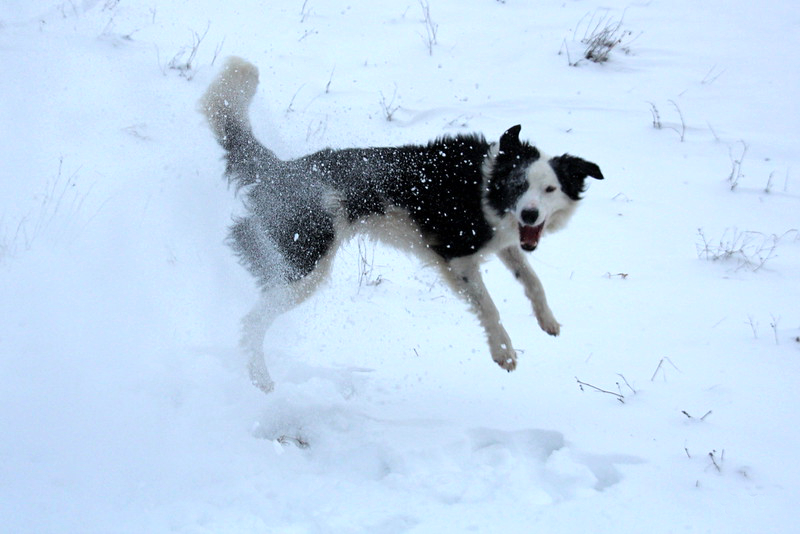
Road salt is commonly and generously used in the winter months, and while it keeps roads safe, the effect on your dog’s paws is not as positive. The salt withdraws moisture, making the paw pads dry and cracked. To counteract the salt, you can apply Vaseline or other fatty cremes as protection. By washing it off with lukewarm water afterwards, you can get rid of snow clumps and gravel all in one go. Speaking of, it may help to trim the fur between your dog’s toes to prevent snow clumps from accumulating so easily.
While a lot of people like to take a hot shower to get warm again, bathing your dog after time spent outside is counterproductive. A dog’s coat builds up natural oils to maintain its function as a protective layer and a bath will wash that right off. A quick towel dry will help get rid of the moisture just as well and will leave your dog protected for the next time you go outside.
Lastly, we’ll tell you in summer, we’ll tell you in winter: don’t leave your dog in the car. With the heating off, the temperature in a parked car drops fast and will become a threat to your dog’s well-being and health.
Coats for dogs - silly or necessary?
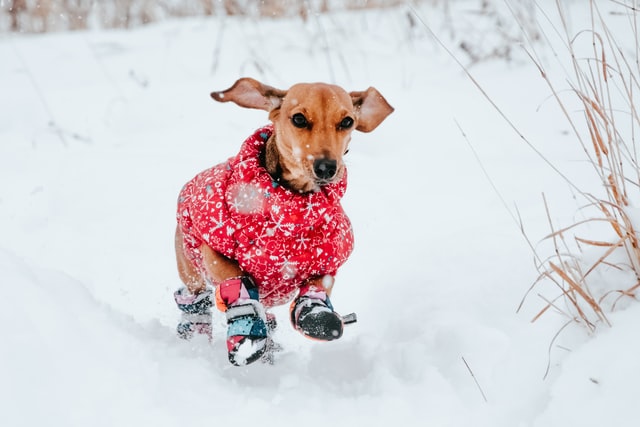
People with little to no knowledge about the subject will often smirk or roll their eyes at a passing dog wrapped up in a snazzy coat. But what seems like human indulgence upon first glance, can actually be really helpful for those dogs, whose fur doesn’t protect them well enough from low temperatures.
If your buddy is one of those that start shaking like a leaf five minutes after stepping outside, you might want to consider investing in a coat. To have the optimal effect, it should cover your dog’s belly while also ensuring that its movement and ability to communicate with other dogs and the environment is not impaired. Water-repellent and breathable materials will keep your dog dry without letting too much heat accumulate under the coat. For practical use, most models allow you to attach the leash to the collar or harness underneath via an opening on the back. With the sun setting much earlier in the winter months, reflectors on the coat (or on the leash) provide extra safety from passing cars or cyclists.
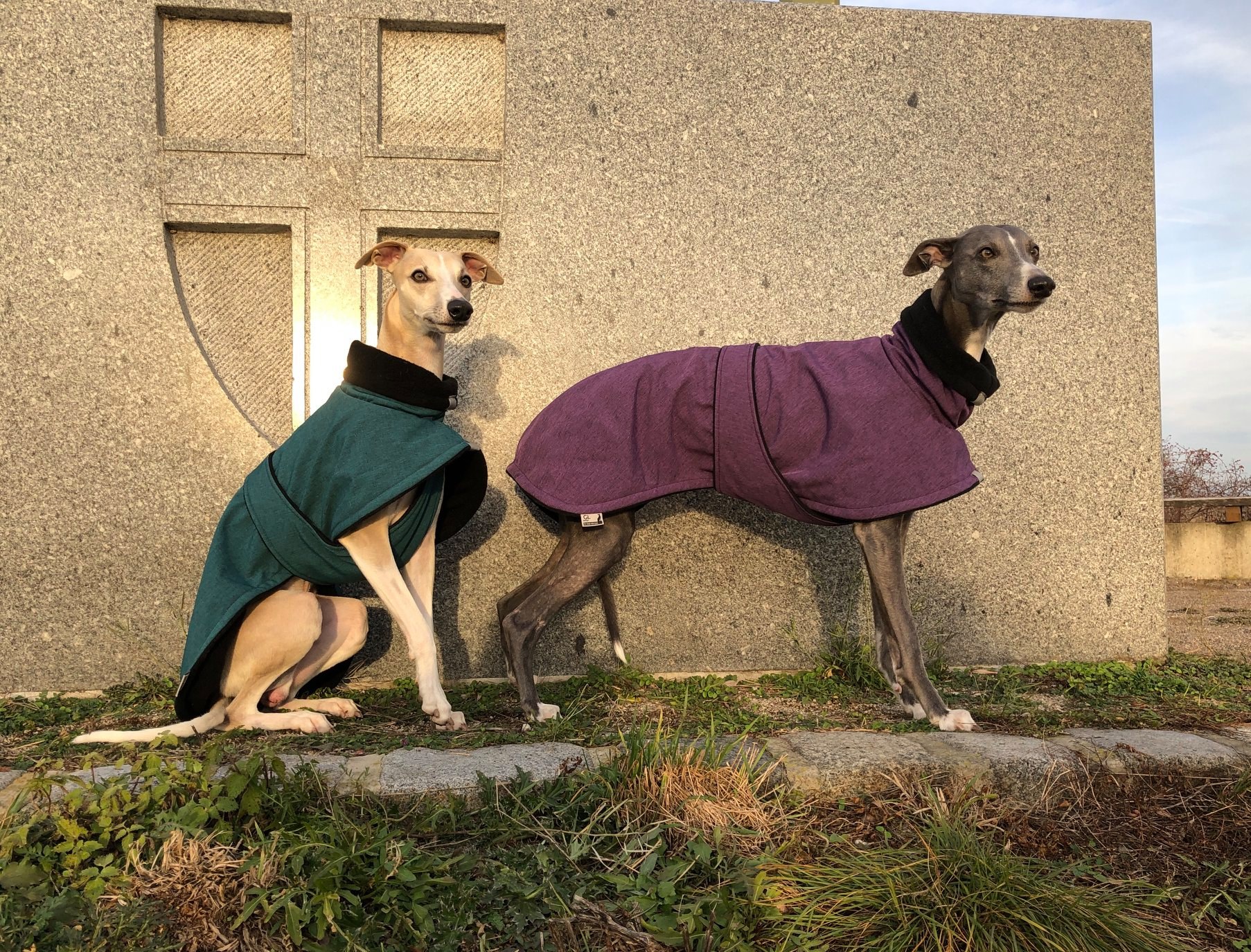
Taking measurements of your dog beforehand will help you in finding a model that fits properly. The circumference of the neck and chest, as well as the length from the base of the neck to the base of the tail is what you’ll want to know, although ideally you can have your dog try the coat on before purchasing it.
Some people also opt for dog shoes to protect their companions from grit, snow, and the cold. If you think that your dog will benefit from them, check with your vet to make sure that it’s the best option. Paws relay a lot of information about the ground to your dog, so impairing their function should only be done if it’s really necessary.
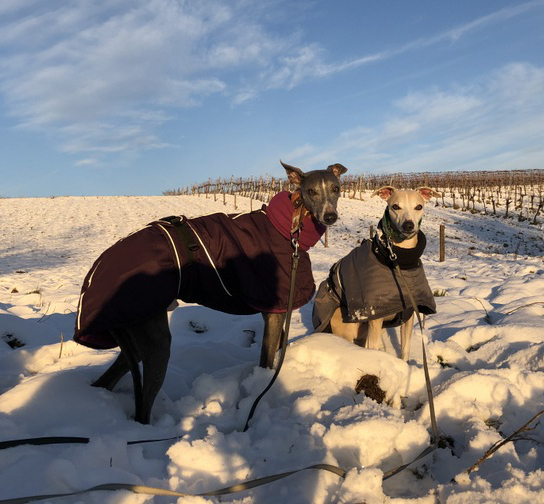
With the weather being colder and wetter, plus the occasional snowfall, your dog will need extra protection and care when going outside. Apart from equipping it with a coat if necessary, you should keep an extra eye on their paws and fur. Drying it once back inside will help your dog warm up again, while a quick check of the paws will help you spot small injuries or tangled grit. Keep these things in mind and you and your dog will frolic through snow and ice together without a care in the world.